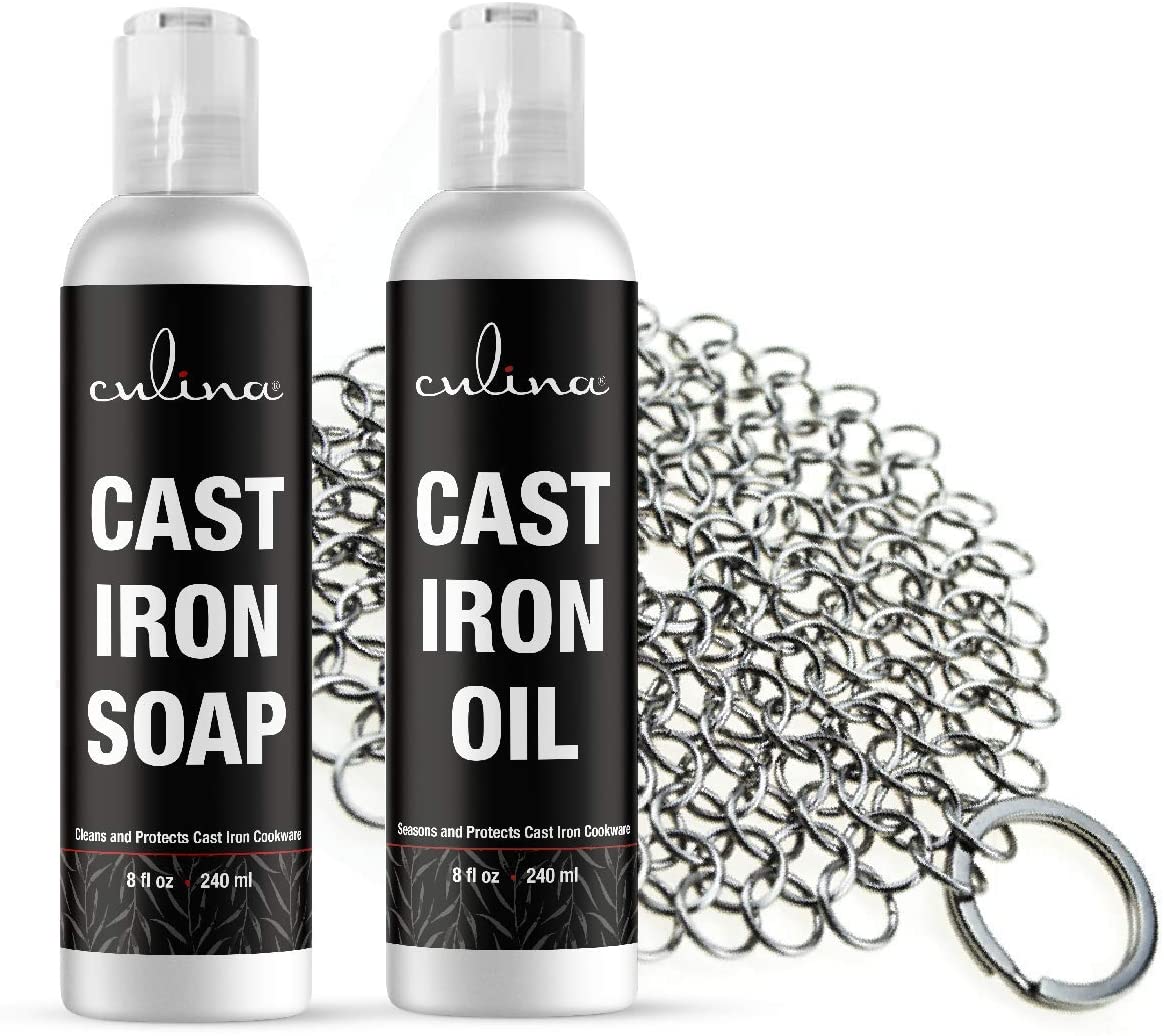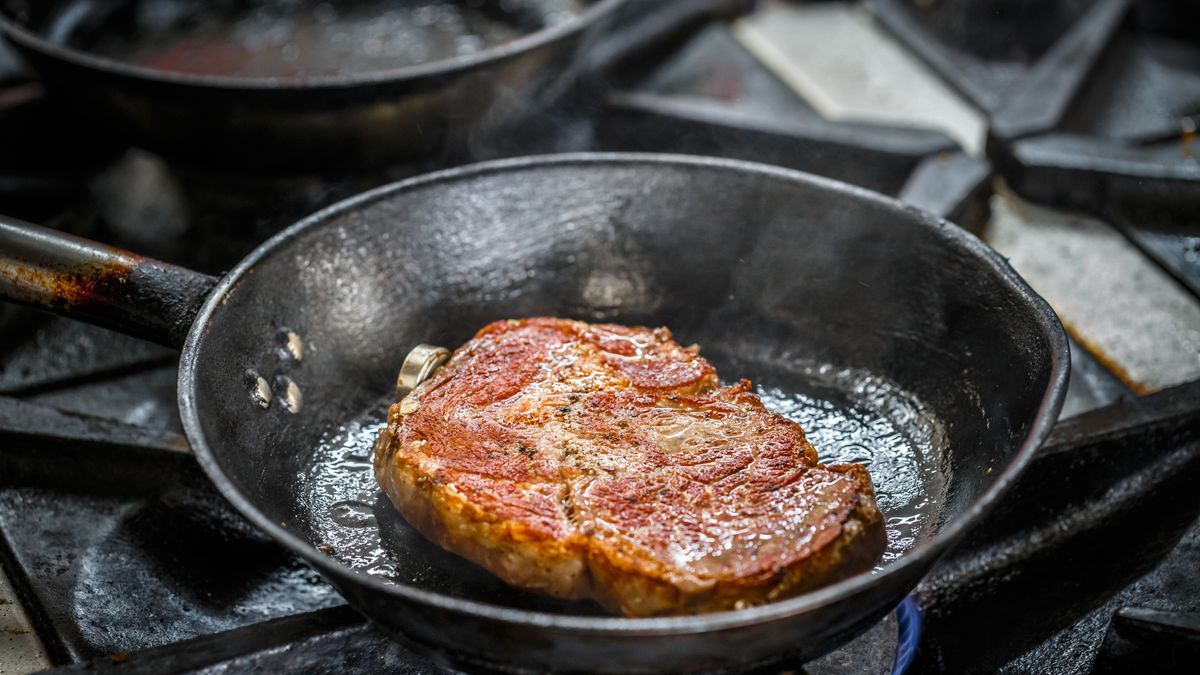The charm and utility of a cast iron skillet lie in its durability and ability to impart rich, robust flavors to every dish. However, over time, even the best-cared-for skillet can show signs of wear. That’s where the knowledge of how to recoat a cast iron skillet comes into play. This guide delves deep into the process, ensuring you can breathe new life into your beloved kitchen tool.

Why Recoating Your Cast Iron Skillet Is Essential
Recoating, also known as reseasoning, is vital for maintaining the non-stick properties and longevity of your skillet. Over time, regular use and improper care can erode the seasoning, leading to rust and sticking issues. By learning how to recoat a cast iron skillet, you can preserve its functionality and ensure it remains a staple in your kitchen.

Signs That Your Cast Iron Skillet Needs Recoating
Visible Rust
Rust is a clear indicator that your skillet needs some TLC. When you notice reddish-brown spots, it’s time to recoat.
Sticky or Rough Surface
If your skillet feels tacky or rough to the touch, it means the seasoning is deteriorating.
Food Sticking During Cooking
When food sticks persistently, it’s a sign that your skillet’s seasoning is compromised.

Materials Needed for Recoating
Basic Cleaning Supplies
- Hot water
- Dish soap
- Stiff brush or sponge
Recoating Tools
- Baking soda
- Salt
- Vegetable oil or flaxseed oil
- Aluminum foil
Step-by-Step Guide: How to Recoat a Cast Iron Skillet
1. Cleaning the Skillet
Start by giving your skillet a thorough scrub. Use hot water, dish soap, and a stiff brush to remove any food particles and residual grease. Don’t worry about removing the existing seasoning at this stage.
For more cleaning tips, check out our guide on how to clean greasy cast iron skillet.
2. Drying the Skillet
Once cleaned, dry your skillet completely. Any remaining moisture can lead to rust. Placing it on a stove over low heat can help evaporate any residual water.
3. Removing Rust
If there’s any rust, create a paste using baking soda and water. Scrub the rusty areas with this paste and a brush until the rust is gone. Rinse and dry the skillet again thoroughly.
4. Applying the Oil
Next, apply a thin layer of vegetable oil or flaxseed oil all over the skilletinside and out. Make sure to cover the handle and the bottom as well.
5. Baking the Skillet
Preheat your oven to 375F (190C). Place a sheet of aluminum foil on the lower rack to catch any drips. Put the skillet upside down on the middle rack. Bake it for one hour.
6. Cooling and Repeating
After an hour, turn off the oven and let the skillet cool inside. For best results, repeat the oiling and baking process 2-3 times.
Maintaining Your Recoated Cast Iron Skillet
Regular Cleaning
Clean your skillet after each use with hot water and a brush. Avoid dish soap and never put it in the dishwasher.
Proper Storage
Store your skillet in a dry place. You can also place a paper towel or dry cloth inside it to absorb any moisture.
Occasional Reseasoning
Even with proper care, you’ll need to recoat your skillet occasionally to maintain its non-stick surface.
Common Mistakes to Avoid
Using Soap
While a small amount of dish soap can be used during the initial recoat cleaning, regular use of soap can strip away the seasoning.
Not Drying Properly
Always ensure your skillet is completely dry before storing it to avoid rust.
Skipping Regular Maintenance
Regular cleaning and occasional reseasoning are crucial for keeping your skillet in top shape.
Additional Tips for Recoating Your Skillet
Choosing the Right Oil
Flaxseed oil is often recommended for its polymerization properties, creating a hard, durable layer of seasoning.
Using a Stove Instead of an Oven
If you don’t have an oven, you can recoat your skillet on the stove. Heat it over medium-high heat and repeat the oiling and heating process several times.
Avoiding High Heat
While it’s important to heat the skillet enough for the oil to polymerize, extremely high heat can cause the seasoning to break down.
Benefits of a Well-Maintained Cast Iron Skillet
Enhanced Cooking Experience
A well-seasoned cast iron skillet provides a non-stick surface, making cooking and cleaning easier.
Improved Flavor
The natural non-stick surface enhances the flavors of your dishes, providing a depth that other cookware can’t match.
Longevity
Properly maintained cast iron skillets can last for generations, becoming a cherished family heirloom.
FAQs
How often should I recoat my cast iron skillet?
The frequency of recoating depends on usage and care. Generally, once every few months is sufficient for regular home use.
Can I use any oil to recoat my skillet?
While you can use various oils, flaxseed oil is highly recommended for its ability to create a durable seasoning layer.
What should I do if my skillet gets rusty again?
If rust reappears, don’t panic. Scrub the rust off and follow the recoating steps outlined in this guide.
Conclusion
Understanding how to recoat a cast iron skillet is essential for anyone looking to prolong the life and utility of their cookware. With the right care and maintenance, your cast iron skillet can continue to serve you well for years to come. For more information on maintaining your cast iron cookware, visit Taste of Home.
As an Amazon Associate, I earn from qualifying purchases.
As an Amazon Associate, I earn from qualifying purchases.
